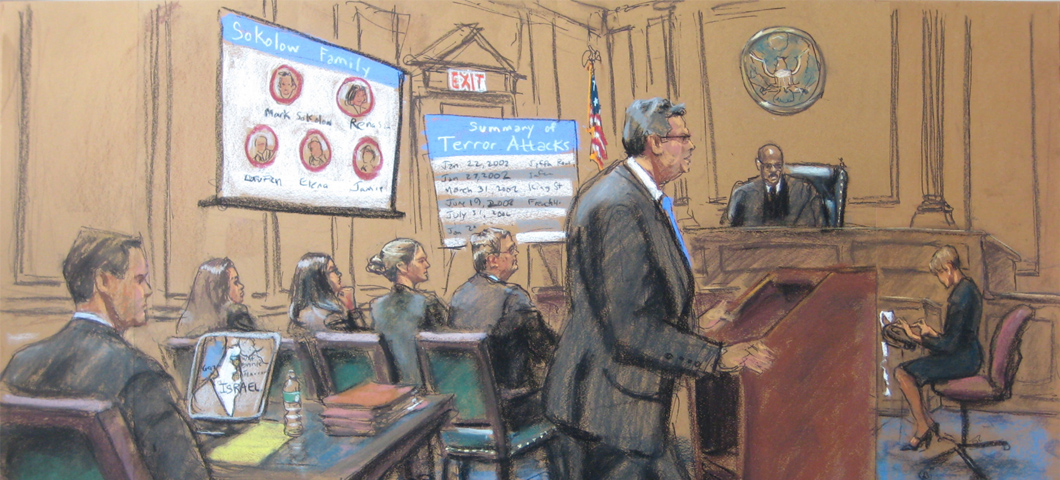Browsing the Complexities of Test Presentations: Tips for Seamless Delivery and Engaging Arguments
In the realm of legal procedures, the art of test discussion stands as a critical determinant of success. The complexities intrinsic in test discussions need a delicate balance of skill, method, and ability.

Understanding Trial Goals
To successfully browse a test, it is essential to have a clear understanding of the goals that need to be achieved. Prior to tipping right into the courtroom, legal teams need to specify their objectives and wanted results. These purposes work as guiding principles throughout the trial, shaping methods and affecting decision-making procedures.
Comprehending test goals includes an extensive evaluation of the situation, legal precedents, and the client's best rate of interests. Trial Presentations. It needs a careful assessment of the truths, determining crucial problems, and preparing for possible challenges. By establishing details and quantifiable goals, attorneys can tailor their discussions and disagreements to align with the desired outcomes
In addition, a clear grip of trial objectives enables lawful teams to prioritize proof, witnesses, and lawful disagreements properly. It permits the advancement of a coherent story that reverberates with the discretionary, reinforcing the general case discussion.

Organizing Evidence Effectively
Having a clear understanding of trial purposes lays the structure for organizing evidence successfully in legal proceedings - Trial Presentations. By straightening the discussion of evidence with the desired end results of the trial, legal groups can enhance their arguments and boost their persuasiveness. One critical aspect of organizing proof is categorization. Organizing proof based on motifs or significance to specific lawful aspects can help simplify the presentation and make intricate information extra digestible for the court or jury.
An additional secret component in organizing proof efficiently is developing a sensible flow. Offering evidence in a meaningful and consecutive manner can assist construct a compelling story that sustains the legal disagreements being made. In addition, using aesthetic help such as timelines, charts, or graphs can better enhance the organization of proof and aid in clarifying complicated relationships or sequences of events.
Moreover, ensuring that all evidence provided is permissible and relevant to the case is necessary. Unnecessary or inadmissible evidence can diminish the stamina of the debate and possibly damage the reliability of the here and now celebration. A thorough review and selection process should be undertaken to include only the most impactful and legally audio proof in the trial presentation.
Crafting Persuasive Narratives
Crafting engaging narratives have a peek at these guys plays a crucial function in offering convincing arguments throughout legal procedures. When constructing a story for a test presentation, it is important to develop a clear storyline that highlights vital points and attaches them in a meaningful fashion. By weaving together proof, testimony, and lawful arguments right into a influential and cohesive story, legal specialists can efficiently support for their clients and boost the likelihood of a positive end result in the court.
Understanding Visual Aids
Reliable use aesthetic help is crucial to enhancing the influence and clarity of trial presentations. Aesthetic help, when utilized tactically, have the power to streamline intricate information, strengthen crucial factors, and leave a lasting perception on the court and court. To understand visual aids in trial presentations, it is critical to ensure that they are clear, concise, and relevant to the arguments being made.
When integrating visual help, such as graphes, photographs, timelines, or graphs, right into a trial presentation, it is vital to keep them visually appealing yet professional. The visuals should complement the verbal arguments, providing a visual representation of the information being discussed without overwhelming the target market with unnecessary information.
In addition, practicing with the visual help ahead of time is important to guarantee a seamless delivery throughout the test. Acquainting oneself with the material, transitions, and timings of each Discover More visual help can assist preserve the flow of the presentation and prevent technological problems that may occur.
Delivering Impactful Closing Debates
A compelling closing debate serves as the end result of a trial discussion, encapsulating the core story and encouraging the judge and court towards a positive decision. Begin by outlining the major arguments that support your client's position, emphasizing why the proof presented throughout the trial sustains your narrative.
Additionally, incorporating sob story can even more reinforce your closing argument. By humanizing the situation and attaching on an individual degree with the decision-makers, you can evoke empathy and understanding, affecting their assumption of the facts presented. Furthermore, stating the lawful criteria that have to be met for a positive judgment can reinforce the validity of your setting. Eventually, a well-crafted closing debate should leave a long lasting perception, engaging the discretionary to regulation in your client's support.
Conclusion
To conclude, grasping trial presentations involves understanding objectives, organizing evidence, crafting stories, making use of aesthetic help, and providing impactful closing disagreements. By carrying out these methods successfully, lawyers can present try this web-site their case flawlessly and make engaging debates in the court. It is important to navigate the complexities of trial discussions with accuracy and skill to achieve success in lawful procedures.
By lining up the discussion of proof with the desired outcomes of the trial, lawful teams can strengthen their arguments and boost their persuasiveness (Trial Presentations). To grasp visual help in test presentations, it is crucial to make certain that they are clear, succinct, and appropriate to the arguments being made
A compelling closing debate offers as the culmination of a test presentation, encapsulating the core story and persuading the court and jury towards a desirable decision. Begin by outlining the primary arguments that sustain your client's placement, emphasizing why the proof provided throughout the test supports your story.In final thought, understanding trial discussions includes recognizing goals, arranging evidence, crafting stories, utilizing aesthetic aids, and providing impactful closing debates.